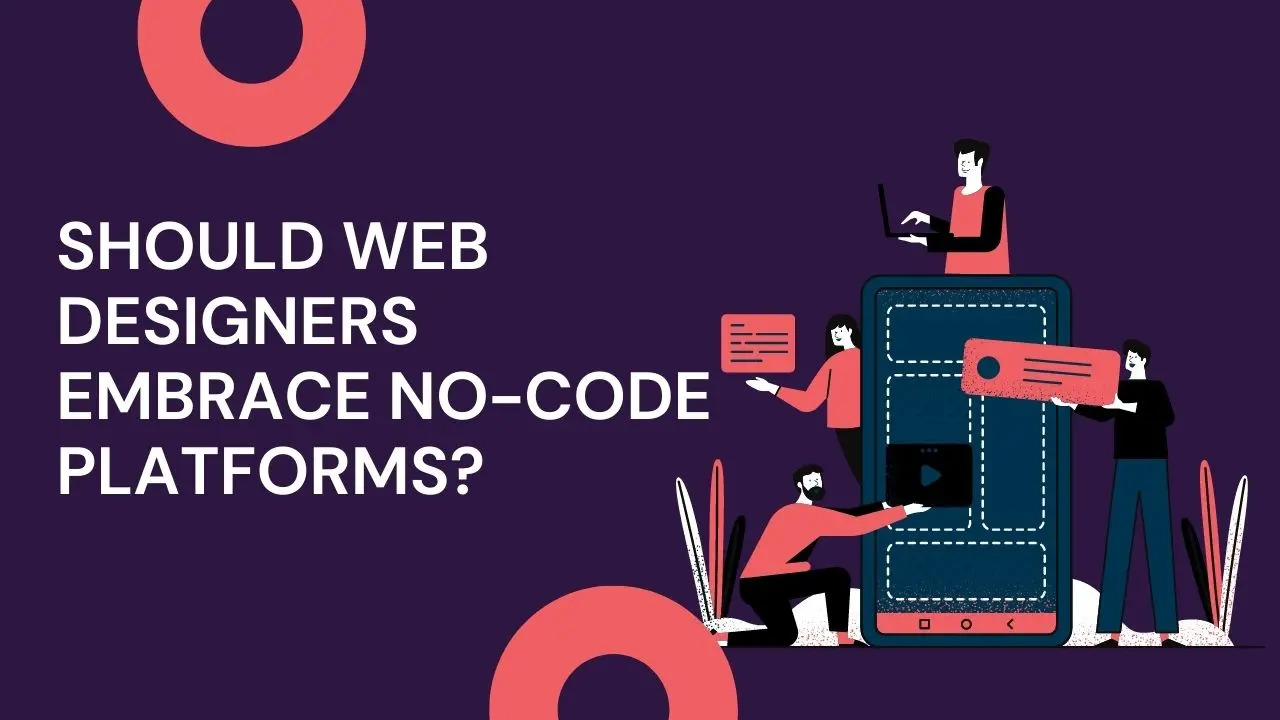

Should Web Designers Embrace No-Code Platforms?
Web design is a field that is constantly evolving and changing, and one of the latest trends in the industry is the rise of no-code platforms.
These platforms allow users to create websites and web applications without writing a single line of code.
This may sound daunting to some web designers, but it’s important to understand that using no-code platforms doesn’t mean that you’re a “lesser” designer, or that you’re not as skilled as someone who can write code.
In fact, there are many reasons why web designers should not be afraid of using no-code platforms, and there are also some important pros and cons to consider.
One of the biggest pros of no-code platforms is that they make web design accessible to a wider range of people.
Not everyone has the time or resources to learn to code, but with no-code platforms, anyone can create a website. This is especially important for small business owners or entrepreneurs who may not have the budget to hire a web designer.
Another pro of no-code platforms is that they can save a lot of time and effort. Instead of writing code from scratch, no-code platforms provide pre-built templates and widgets that can be easily customized.
This can greatly speed up the web design process, and allow designers to focus more on creating a great user experience rather than getting bogged down in code.
No-code platforms also make it easy to test out new ideas and make changes quickly. In traditional web design, making even a small change to a website often requires writing new code. With no-code platforms, it’s easy to make changes without having to worry about breaking anything.
This can be especially valuable for businesses that need to make updates or changes to their website on a regular basis.
However, there are also some cons to consider when it comes to no-code platforms. One of the main downsides is that you are limited in terms of design options. Since the templates and widgets are pre-built, you can only customize within the confines of what’s already there. This can make it difficult to create truly unique designs that stand out from the crowd.
Another con of no-code platforms is that they can be less flexible than traditional web design. If you need to create a website that requires a lot of custom functionality, it may be more difficult to achieve this with a no-code platform than with traditional web design.
Finally, for designers who may be thinking about building a long term business with no-code, it’s important to note that it may be harder to create complex, highly customised websites with a no-code platform. So if you’re looking to become a professional web designer, having a solid background in coding will be important.
In conclusion, web designers should not be afraid of using no-code platforms. They offer many benefits such as accessibility and speed in creating website, and can be a great tool for small business owners or entrepreneurs who need to create a website quickly and easily.
However, it’s important to understand the limitations of no-code platforms and consider whether they are the right choice for a specific project. Always, understanding how to code will be necessary to stand out and be successful in a competitive web-design market.


